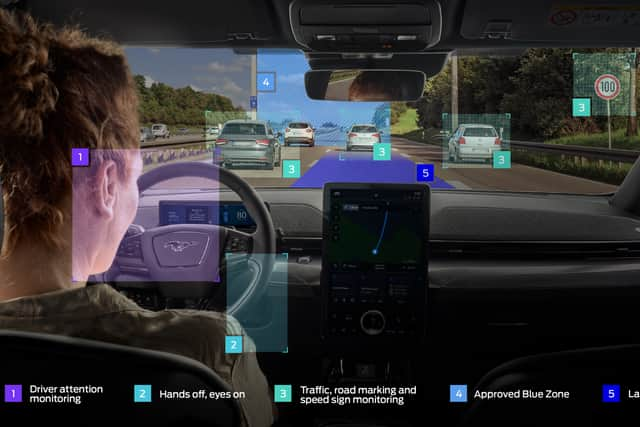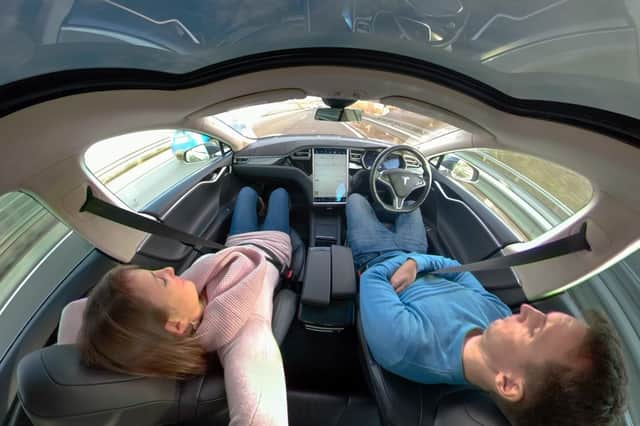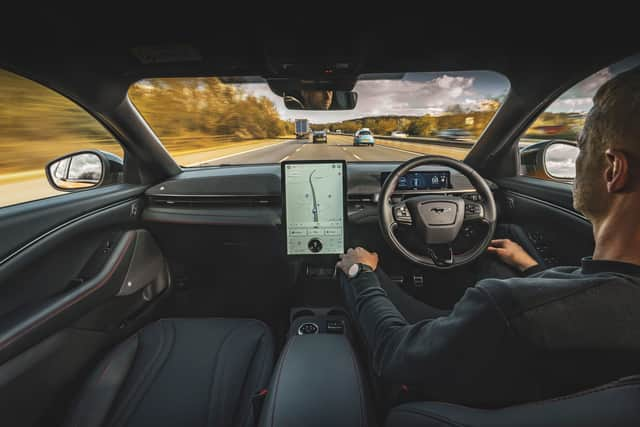I often test ‘self-driving’ cars as a motoring journalist - we need to tread carefully
and live on Freeview channel 276
Ford has just been granted approval for Britain's first hands-off, eyes-on assisted driving system.
In effect, BlueCruise allows drivers to legally take their hands off the steering wheel for prolonged periods while the car’s onboard systems take control of acceleration, braking and steering on more than 2,300 miles of predetermined motorways.
Advertisement
Hide AdAdvertisement
Hide AdThe system is seen as the first step towards truly self-driving cars - something the UK government wants the country to be at the forefront of - and Ford’s European general manager Martin Sander says the move is a “step into the future”. But it’s one that we must take cautiously. The technology across the industry is improving all the time but it’s still far from flawless and there’s still a worrying scope for operator error.
Any time spent on the UK’s motorways is a lesson in how poor driving standards already are, so in some ways a system that can take over could be an improvement. The danger, however, is that such systems simply encourage bad drivers to get worse.
I’m absolutely sure Ford’s testing has proved that BlueCruise is safe and reliable within a very tightly defined set of parameters around the road type, conditions and driver attentiveness. And it’s making sure the system can only be activated in specifically identified areas.


This is great, as is the “eyes on” driver monitoring element of the BlueCruise system. The problem is that, as with any advanced driver assistance system (ADAS), it’s inevitable that drivers will overestimate their car’s abilities.
Advertisement
Hide AdAdvertisement
Hide AdYou only need to look at terrible drivers posting videos of themselves watching films, playing games or even sleeping at the wheel of their “self-driving” Teslas to realise that no matter how insistent manufacturers are about the limitations of their systems, people will misinterpret them - deliberately or through ignorance.
It's in such circumstances where the potential safety benefits clash with the dangers of drivers’ unrealistic expectations.


It’s something Thatcham Research - which expounds the potential safety benefits of driver assistance - is concerned about. Its Trust in Automation study found a terrifying 52% of UK drivers thought full self-driving cars are already on sale. Its chief strategic research officer, Matthew Avery, warns that “perception is racing ahead of reality” and says that the safe introduction of more advanced driver assistance systems is dependent on robust and ongoing driver education.
So drivers' misunderstanding is a real issue. As are the limitations of all such ADAS technologies. Any semi-autonomous system sees drivers abdicate responsibility to technology which, in 2023, still cannot be fully trusted.


Advertisement
Hide AdAdvertisement
Hide AdIn the last six months, I’ve driven cars whose “intelligent” speed sign recognition - which will allegedly match the car’s speed to the local limit - insisted that a well signposted stretch of national speed limit road was a 20mph zone and that a 20mph town centre route had a 70mph limit. I’ve had cars whose lane assist systems have tried to steer me into a river, a sheep and potholes big enough to destroy a wheel. Others have slammed on the brakes unexpectedly to avoid non-existent “obstructions”, or deactivated assistance systems entirely without warning because they couldn’t cope with the conditions.
There isn’t a motoring journalist I know who hasn’t had similar experiences and I’ve heard more than one horror story of cars trying to perform emergency stops from 70mph because their cameras misread a road sign.
That’s not to mention the impact of the weather on such systems. In a country where we get more than our fair share of wind, rain and snow, it’s all too easy for a camera or sensor to be rendered “blind” and useless by even minor obstructions.
In such circumstances the driver needs to be ready to take back control, which brings us back to the issue of whether they are alert enough to do so. One study from 2018 suggests that it takes up to three seconds for a driver who isn’t paying attention to fully regain control of the vehicle. At motorway speeds that’s 308 metres - or 70 car lengths.
I’m no Luddite and ADAS is getting better all the time, but until we can trust the systems and the operators fully it’s going to be a slow road towards a self-driving future.
Comment Guidelines
National World encourages reader discussion on our stories. User feedback, insights and back-and-forth exchanges add a rich layer of context to reporting. Please review our Community Guidelines before commenting.
